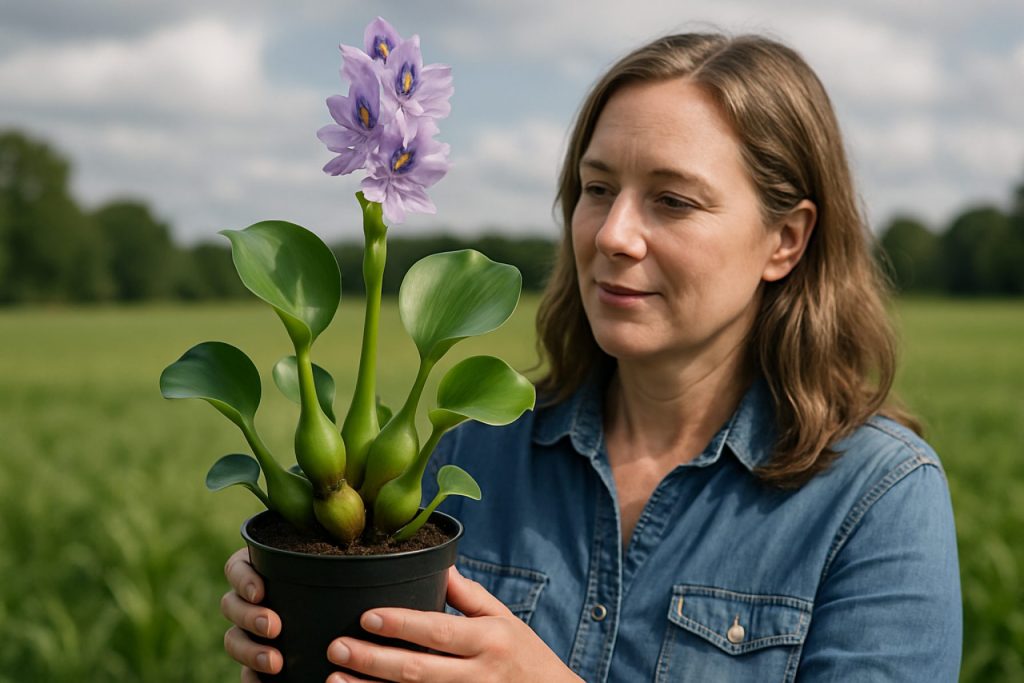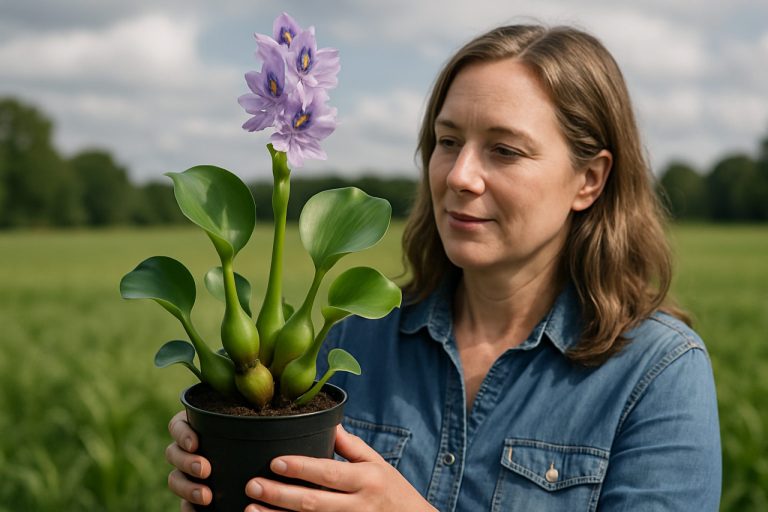
- Bamboo absorbs significant amounts of carbon dioxide, helping combat climate change.
- Its rapid growth rate makes bamboo one of the most renewable resources available.
- Bamboo’s tensile strength rivals steel, making it valuable for sustainable construction and manufacturing.
- It supports soil stability, prevents erosion, and aids in land restoration.
- Bamboo provides livelihoods, food, and resources for rural communities worldwide.
- Sustainable bamboo cultivation is essential to preserve biodiversity and avoid environmental risks.
- Its versatility and eco-friendly potential make bamboo a key player in the shift toward a circular economy.
A wild symphony of color unfolds each spring as fields burst into bloom, but one seemingly ordinary plant is quietly reshaping the future of sustainability. Bamboo, often dismissed as a simple garden staple, is emerging as a silent powerhouse in the global fight against climate change.
Towering stalks of bamboo sway in the breeze—not just beautiful, but brimming with potential. Biologists and environmentalists increasingly praise bamboo’s ability to absorb carbon dioxide. In fact, mature bamboo groves can sequester up to 12 tons of carbon per hectare every year. Its rapid growth rate outpaces most trees: some species can shoot up a stunning 91 centimeters (about 3 feet) in a single day, making them a renewable resource with almost no competition.
But the benefits cascade far beyond the environment. Artisans, engineers, and architects are eyeing bamboo’s tensile strength, which rivals that of steel. Across Asia and now global urban centers, innovative minds craft everything from sleek bicycle frames to resilient building materials—demonstrating its versatility and promise for a circular economy.
Bamboo roots run deep, both literally and metaphorically. As they anchor the soil, they prevent erosion and help rebuild degraded land. Rural communities rely on this natural marvel for livelihood and sustenance, harvesting shoots for culinary delicacies and leaves for animal fodder.
Climate experts highlight a key warning: mass adoption isn’t without risk. Monoculture plantations, if poorly managed, can threaten biodiversity. Sustainable practices—mixed-species planting, responsible harvesting, and protecting native forests—are essential to unlock bamboo’s full promise.
The shift is unmistakable: designers, policymakers, and consumers are looking beyond the surface, discovering that sustainable elegance can rise from the most unassuming sources. Bamboo is not merely a plant—it is a glimpse into a future where humans work with nature’s ingenuity.
Key takeaway: Bamboo’s unique combination of strength, speed, and sustainability positions it as a crucial ally in the quest for a greener planet—if used wisely and thoughtfully. To explore more about sustainable practices and the world’s most innovative materials, visit National Geographic or World Wildlife Fund.
Bamboo: The “Green Steel” Revolutionizing Sustainability—And What You Need To Know Right Now
Bamboo: Nature’s Best-Kept Secret for a Greener Tomorrow
Bamboo is rapidly gaining worldwide attention not just for its breathtaking beauty, but for its game-changing role in sustainability and innovation. Beyond its ability to absorb carbon dioxide, bamboo’s unique properties, rapid growth, and multifaceted uses have experts hailing it as the “green steel” of the 21st century. However, this superplant is not without its challenges. Here’s everything you need to know to make informed, eco-friendly choices, complete with actionable tips and real-world insights.
—
1. Bamboo’s Environmental Impact: Fast Facts & Key Stats
– Unmatched Carbon Sequestration: Mature bamboo sequesters up to 12 tons of CO₂ per hectare per year. That’s comparable to or exceeds many fast-growing trees ([FAO](https://www.fao.org/)).
– Blazing Growth Rate: Some species grow up to 91 cm (3 ft) per day. This makes bamboo among the fastest-growing plants on earth, able to reach harvest maturity within 3-5 years—versus the decades or centuries for hardwoods.
– Restores Soil: Bamboo’s dense root system prevents erosion, rehabilitates degraded land, and retains water—benefiting surrounding crops and biodiversity.
—
2. How-To: Incorporating Bamboo in Your Daily Life
Step 1: Choose bamboo products over plastic or hardwood alternatives—think toothbrushes, tableware, and even clothing.
Step 2: Opt for certified sustainably sourced bamboo (FSC or similar) to ensure ethical practices.
Step 3: Upcycle bamboo offcuts from furniture or construction for decorative or gardening purposes.
Step 4: Grow your own bamboo for garden screening, soil stability, or culinary use (young shoots are edible!).
—
3. Real-World Bamboo Innovations & Use Cases
– Architecture & Construction: Eco-buildings in Southeast Asia, India, and South America now use engineered bamboo panels and beams—lightweight, earthquake-resistant, and stronger (per weight) than steel ([WWF](https://www.wwf.org/)).
– Bicycles & Sporting Goods: Bamboo’s tensile strength makes it ideal for frames, skateboards, and even surfboards—durable and shock-absorbing.
– Textiles & Fashion: Modern processing makes bamboo yarn soft, breathable, and antibacterial. Major brands are tapping into “bamboo viscose” fabrics.
– Paper & Packaging: As a fast-renewable resource, bamboo reduces the need for tree-based paper, minimizing deforestation.
—
4. Features, Specs, and Pricing
| Feature | Bamboo (vs. Wood or Steel) |
|———————-|————————————————|
| Growth Rate | Up to 3 feet/day (vs. 1-2ft/year for trees) |
| Harvest Cycle | 3-5 years (vs. 20-70 years for hardwoods) |
| Tensile Strength | ~28,000 psi (comparable to steel) |
| Market Price (2024) | 10-40% less than hardwoods for raw material |
| Sustainability Cert. | FSC, PEFC, EcoCert |
_Prices and certifications vary by region and quality._
—
5. Market Forecasts & Industry Trends
– Market Size: The bamboo industry was valued at ~$68 billion in 2023 and is projected to surpass $100 billion by 2030 (source: [Grand View Research](https://www.grandviewresearch.com/)).
– Growth Segments: Construction, packaging, and textiles are experiencing the fastest adoption rates.
– Regional Drivers: Asia-Pacific leads production and innovation, but interest is surging in North America and Europe.
—
6. Pros & Cons Overview
Pros
– Super-fast renewability & carbon sink capacity
– Innate antimicrobial properties in textiles and flooring
– Lightweight yet ultra-strong; earthquake resistant
– Naturally pest-resistant, reducing pesticide usage
Cons
– Poorly managed monoculture plantations can degrade soil and harm biodiversity
– Bamboo textiles (viscose) often require harsh chemical processing
– “Greenwashing” risk—ensure trusted certifications
—
7. Controversies & Limitations
– Monoculture Risks: Large-scale plantations often replace natural forests, threatening native species and local water cycles. Experts recommend intercropping and maintaining wild bamboo stands where possible.
– Textile Processing: Bamboo viscose, while eco-friendly as a fiber, can involve polluting chemical processes unless produced in closed-loop systems (look for ‘lyocell’ over generic viscose).
– Supply Chain Transparency: Like many sustainable materials, traceability remains an issue. Seek brands and suppliers willing to provide clear sourcing info.
—
8. Security & Sustainability Insights
– Fire Resistance: Bamboo structures, when properly treated, have high fire resistance and safety ratings.
– Waste & Lifecycle: Unlike plastics, bamboo decomposes fully and rapidly, reducing landfill overload.
– Climate Resilience: Bamboo adapts to drought, flood, and poor soils, making it ideal for climate adaptation strategies.
—
9. Compatibility & Tutorials
– DIY Friendly: Easy to cut, sand, and join by hand. Bamboo can be integrated into home projects with standard carpentry tools.
– Indoor & Outdoor Use: Can be finished for weather resistance, making it suitable for decks, fences, or interior flooring.
—
10. Most Pressing Reader Questions
– Is bamboo really better for the planet than wood or plastic?
Yes, when grown and harvested responsibly, bamboo outperforms both in renewability, carbon absorption, and end-of-life biodegradability.
– Are all “bamboo” products eco-friendly?
No. Seek certifications (FSC, OEKO-TEX for textiles) and avoid “bamboo viscose” without sustainable processing details.
– Can I grow bamboo at home?
Absolutely! Choose non-invasive, clumping varieties unless you’ve got room for running bamboos (which can spread aggressively).
– Is bamboo safe for food use?
Yes, as long as processed without harmful chemicals. Bamboo utensils and shoots are widely consumed in Asia.
—
11. Actionable Tips & Recommendations
– Buy certified: Insist on products with sustainability credentials.
– Mix & match: If you’re a gardener or farmer, practice mixed-species planting.
– Support local: Opt for regionally sourced bamboo to lower transport emissions.
– DIY upcycle: Repurpose old bamboo furniture or chopsticks for garden stakes or crafts.
—
To learn more about sustainable practices and innovative biomaterials, visit trusted resources like National Geographic and WWF.
Quick Tip: When selecting bamboo products for home or garden, prefer solid bamboo over composite or laminated forms for durability and minimal chemical use.
—
Bottom line:* Bamboo represents a powerful tool in the global shift toward sustainability, but its full promise is unlocked only with responsible stewardship and informed consumer choices. Choose wisely, and you can make a real-world impact today!



